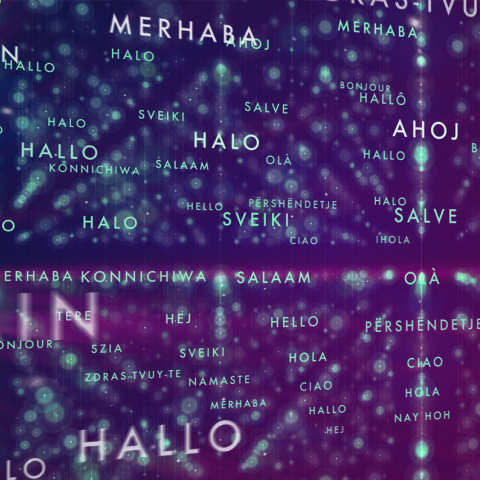
Artificial intelligence: the revolution in work (and in our lives) has begun
ChatGPT has changed the rules of the game, but AI has been in businesses and homes for decades. What’s going on? The fascinating new chapter in the history of machines and humans.
At some point between 2022 and 2023, the world suddenly woke up to the existence of Artificial Intelligence (AI) and its range of applications. Credit for this new and sudden awareness can largely be attributed to OpenAI, or rather to ChatGPT – the most prominent tool released by the Californian company backed by, among others, Microsoft, and Reid Hoffman, co-founder of LinkedIn.
In reality, as many argue, we’ve been living with AI for quite some time, ever since human beings discovered the capacity for abstraction, imagination and storytelling. Some even go so far as to equate human intelligence itself with artificial intelligence. Hype for AI (which is in turn both optimistic and apocalyptic) is now invading the web and every other form of media. But where does it all come from?
It seems unlikely that at any time before have the practical applications of a “new” technology touched people's professional and private lives in such a simple, rapid and material way, while also raising the prospect of new forms of progress and eliciting bewilderment at the possibilities they bring – such as making hundreds of tasks simpler or permanently doing away with our jobs.
Artificial intelligence
There are at least as many definitions of artificial intelligence as there are areas where it can be applied. Its official origin was a 1956 conference in the United States which referred to "the science and engineering of making intelligent machines" (John McCarthy). According to the Encyclopedia Britannica, artificial intelligence is “the ability of a digital computer or computer-controlled robot to perform tasks commonly associated with intelligent beings.” We would add that the field of artificial intelligence also creates and constantly improves the computers and processes involved. This is most clearly seen by the fact that the AI we are surrounded by (parking assistants in cars, Alexa and Siri helping us play music, or Google Translate) never had the same, startling effect as seeing an application capable not only of holding a conversation and giving us (mostly) sensible answers, but above all of creating something we asked for in a matter of seconds: a post, an article, or an image that didn't exist. In short, we are seeing the leap from weak AI to strong AI, a form of AI that goes beyond problem solving and begins to think and act independently.
Automated Content Creation
Generative AI is artificial intelligence capable of autonomously creating new content (albeit with some grey areas around the subject of copyright), and which is at the core of Automated Content Creation. As mentioned, the most well-known and popular of these tools is ChatGPT, a chatbot based on the GPT (Generative Pre-trained Transformer) linguistic model; the fourth version of the tool was recently launched. ChatGPT exceeded 100 million users in the first two months of its launch and, as of 2023, boasts more than 13 million daily users. Also available are DALL-E, Stable Diffusion or Midjourney, which create images from text inputs, as well as dozens of other tools whose algorithms are able to generate videos, avatars, speech, music, presentations and ads (including Synthesia, Tome and AIVA ). And yet this is only the tip of the iceberg, because systems that utilize AI (especially in business environments) are now widespread across many sectors and exploit machine learning, language and face recognition, data analysis, and much more.
Artificial intelligence and business
In reality, the business world has known about AI-based software, hardware and processes – and has been trialing and using them – for a very long time. However, these latest developments serve to further accelerate the process of making task and procedure automation faster and more effective. According to 94% of the managers interviewed by Deloitte in its most recent report, State of AI in the Enterprise, AI will be a determining factor over the next five years, with growing investment (according to 76% of the interviewees), but also an area in which one of the main stumbling blocks will remain the involvement and training of staff. And in terms of employment, new specialists in this area are already starting to emerge: those able to interact with the algorithms to obtain the best results or assess the output and provide feedback. One example of this are “prompt engineers” (or “designers”), professionals specialized in creating instructions to be fed to the machine; they are expected to be increasingly in demand across the board, and therefore in all sectors where AI is already in use – from finance, customer care, art and the legal sector to health-care services and automated translations.
AI “wars”
Amid multi-million-dollar funding, acquisitions and system integrations, the entire tech world is now in upheaval. Microsoft integrated “its” ChatGPT into Bing and released Copilot for Teams and the Office suite. Google is grappling with Bard, an AI chatbot whose potential is yet to be seen. Meta, meanwhile, has already slipped up a couple of times and is trying to regain ground with tools like Make-A-Video. However, beyond the race to create the app with the most “wow” factor, those in business feel that we have reached a point of no return, one of those historical junctures which, not surprisingly, has already been compared to the industrial revolution or the invention of the camera.
STAR7 and AI
At STAR7, the use of AI is not only an accepted fact and an integral part of our processes, we also consider it to be one of the most fascinating and active frontiers in research and experimentation. In the translation field, Machine Translation is an established tool used by our professionals with results that constantly increase the quality and quantity of output and which is boosted, for example, by text recognition applications for complex images. And, in parallel to this, features such as Speech to Text and Automated Speech Recognition are proving to be crucial in the transcription work cycle. Other AI applications are also being deployed in projects that involve all of our service lines. The reason? We have always liked to consider technology an opportunity, a resource we can exploit – and AI is no exception. It will have to be managed, improved, customized and regulated (the ethics of AI and the increased risk of fake content need to be seriously addressed), but every company, whether it is aware of it or not, has already entered the era of the Augmented Workforce – in other words, work resulting from the cooperation between humans and artificial intelligence.
P.S. In case you were wondering, this article was NOT written by ChatGPT.


